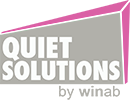Good Classroom Acoustics – A Good Investment
The incremental costs for achieving good classroom acoustics is a small fraction of total costs of new school construction. But since school construction funding is limited, good acoustics must compete with other programs intended to improve the education and lives of citizens. Good acoustics can survive this competition if decision makers are convinced that its costs are justified by their economic benefits. A proper economic study of this question has never been attempted. However, informal engineering estimates made by acousticians, audiologists, and material vendors suggest that the case for good classroom acoustics is strong. This paper identifies and estimates some of the costs for good acoustics in new construction. It also identifies and estimates some previously unrecognized economic benefits of good acoustics, as well as some of the hidden costs of marginal or poor acoustics. Results suggest that the economic benefits of good acoustics far outweigh its costs. Therefore, a case can be made that good classroom acoustics is a good economic investment.
The education of its citizens is essential to all modern societies. Most formal education takes place in classrooms. Classroom learning typically involves intensive speech communication between teachers and students, and among students. The effectiveness of this communication, and hence, the effectiveness of the learning environment is mediated by acoustical conditions in the classroom. Good classroom acoustics greatly facilitates learning. With good classroom acoustics, learning is easier, deeper, more sustained and less stressful. Excessive noise and reverberation in classrooms are barriers to learning to the extent that they degrade or inhibit speech communication.
Poor classroom acoustics degrades the educational process for all students and teachers. It is also true that noise and reverberation are selective barriers to learning. Young children, adult learners, and persons with hearing, language, speech, attention deficit or other learning disabilities are especially vulnerable to marginal or poor acoustics.
The educational benefits of good classroom acoustic environments have not been quantified. This creates a problem. Absent clear statements of their benefits to learning, the features necessary to ensure good classroom acoustics are often omitted from classroom design specifications. Even when acoustical features are initially included in design, they are often removed in value engineering design exercises because they are perceived as costs without quantifiable benefits. It is important therefore to quantify the cost benefits of good classroom acoustics. This paper previews some exercises intended to quantify the benefits.



